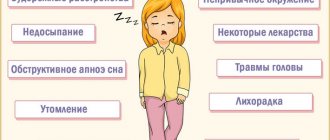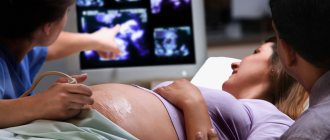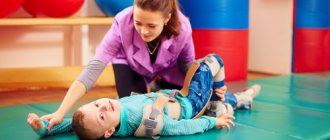Gavrilkina Oksana Sergeevna Chief rehabilitation doctor, physical therapy and sports medicine doctor,
More about the doctor
Pseudobulbar syndrome (supranuclear bulbar palsy) is a disease associated with impaired blood supply to the cranial nerves of the medulla oblongata. The pathology is more common in older people as a result of atherosclerosis of the cerebral arteries. Unlike bulbar syndrome, pseudobulbar syndrome is not life-threatening, but reduces its quality and duration.
Causes of development of pseudobulbar palsy
The cause of the disease is considered to be chronic cerebrovascular accident. As a result, control of the IX (glossopharyngeal), X (vagus), XII (hypoglossal) pairs of cranial nerves from the cortical structures of the brain is blocked. In this way, pseudobulbar syndrome differs from bulbar syndrome, in which the tissue of the nuclei of these nerves is affected.
The most common cause of illness in the elderly is cerebral atherosclerosis , which leads to disruption of the trophism of the nervous tissue of the medulla oblongata.
Other causes of pseudobulbar syndrome:
- severe course of hypertension ;
- Parkinson's disease;
- consequences of strokes ;
- encephalitis and other inflammatory diseases of the central nervous system;
- traumatic brain injuries;
- brain tumors.
The disease leads to motor disorders of the muscles of the face, pharynx and articular apparatus involved in speech production. Hemiparesis and monoparesis develop less frequently.
Links[edit]
- Parvizi J, Archiniegas DB, Bernardini GL, Hoffman MW, et al (2006). "Diagnosis and treatment of pathological laughter and crying". Proceedings of the Mayo Clinic
.
81
(11):1482–1486. DOI: 10.4065/81.11.1482. PMID 17120404. - ^ abc Dark Florida, McGrath JJ, Ron MA; McGrath; Ron (1996). "Pathological laughter and crying." Australian and New Zealand Journal of Psychiatry
.
30
(4): 472–479. DOI: 10.3109/00048679609065020. PMID 8887697. S2CID 30407097. CS1 maint: multiple names: list of authors (link) - ^ ab Skirrow, Caroline; Asherson, Philip (2013). "Emotional lability, comorbidities, and disorders in adults with attention deficit hyperactivity disorder." Journal of Affective Disorders
.
147
(1–3):80–6. DOI: 10.1016/j.jad.2012.10.011. PMID 23218897. - Latu, Javed; Mistry, Minal; Dunn, Francis J (2013). "Often Overlooked Neuropsychiatric Syndromes in Parkinson's Disease". British Journal of Medical Practitioners
.
6
(1). Archived from the original on November 4, 2014. Retrieved November 4, 2014. - Jump up
↑ Levitt, S. (2013). Treatment of cerebral palsy and motor delay. Wiley. ISBN 9781118699782. Archived February 20, 2017. Retrieved November 4, 2014. - Atchison, B.; Dirette, D. C. (2007). Conditions in Occupational Therapy: Impact on Work Productivity. Lippincott Williams and Wilkins. paragraph 40. ISBN 9780781754873. Archived February 20, 2021. Retrieved November 4, 2014.
- Devinsky, O; Vasquez, B. (1993). "Behavioral changes associated with epilepsy." Neurological clinics
.
11
(1): 127–49. DOI: 10.1016/S0733-8619(18)30173-7. PMID 8441366. - "Medscape: Access to Medscape". medscape.com. Archived from the original on November 2, 2015. Retrieved November 4, 2014.
- ^ a b Moore S.R., Gresham L.S., Bromberg M.B., Kasarkis E.J., Smith R.A.; Gresham; Bromberg; Kasarkis; Smith (1997). "A self-report measure of affective lability". Journal of Neurology, Neurosurgery and Psychiatry
.
63
(1):89–93. DOI: 10.1136/jnnp.63.1.89. PMC 2169647. PMID 9221973. CS1 maint: multiple names: list of authors (link) - Shaibani AT, Sabbagh MN, Doody R (1994). "Laughter and crying in neurological disorders." Neuropsychiatry, neuropsychology and behavioral neuroscience
.
7
: 243–250. - Jump up
↑ Black DW (1982).
“Pathological laughter. Literature review". Journal of Nervous and Mental Diseases
.
170
(2):67–71. DOI: 10.1097/00005053-198202000-00001. PMID 7057172. S2CID 25616832. - Jump up
↑ Green R.L. (1998).
"Affect regulation." Seminars in Clinical Neuropsychiatry
.
3
(3): 195–200. PMID 10085207. - ^ ab Cummings J., Arciniegas D., Brooks B., Herndon R., Lauterbach E., Pioro E., Robinson R., Sharr D., Schiffer R., Weintraub D.; Arciniegas; Brooks; Herndon; Lauterbach; Pioro; Robinson; Sharre; Schiffer; Weintraub (2006). "Definition and diagnosis of involuntary emotional expression disorder." Spectra of the central nervous system
.
11
(6): 1–7. DOI: 10.1017/S1092852900026614. PMID 16816786. CS1 maint: multiple names: list of authors (link) - Archiniegas DB, Topkoff J (2000). "Neuropsychiatry of pathological affect: an approach to assessment and treatment." Seminars in Clinical Neuropsychiatry
.
5
(4): 290–306. DOI: 10.1053/scnp.2000.9554. PMID 11291026. - ^ a b Parvizi J., Anderson S.W., Martin Colorado, Damasio H., Damasio AR; Anderson; Martin; Damasio; Damasio (2001). "Pathological laughter and crying: connections to the cerebellum". Brain
.
124
(Pt 9): 1708–1719. DOI: 10.1093/brain/124.9.1708. PMID 11522574. CS1 maint: multiple names: list of authors (link) - McCullagh S, Moore M, Gawel M, Feinstein A (1999). "Pathological laughter and crying in amyotrophic lateral sclerosis: association with prefrontal cognitive dysfunction." Journal of Neurological Sciences
.
169
(1–2): 43–48. DOI: 10.1016/s0022-510x(99)00214-2. PMID 10540006. S2CID 34234732. - Robinson RG, Parikh RM, Lipsey Jr, Starkstein SE, Price TR; Parikh; Lipsey; Starkstein; Price (1993). "Pathological laughter and crying after stroke: validation of a measurement scale and a double-blind treatment trial." American Journal of Psychiatry
.
150
(2):286–293. DOI: 10.1176/ajp.150.2.286. PMID 8422080. CS1 maint: multiple names: list of authors (link) - Lopez, Oscar L.; Gonzalez, Maria P.; Becker, James T.; Reynolds, Charles F.; Sudilovsky, Abraham; DeKosky, Stephen T. (1996). "Symptoms of depression and psychosis in Alzheimer's disease and frontotemporal dementia: exploring underlying mechanisms." Neuropsychiatry, neuropsychology and behavioral neuroscience
.
9
(3): 154–161. - Tremont Geogffery. "Neurobehavioral functioning in thyroid diseases." Medicine and health
. “Archive copy” (PDF). Archived (PDF) from the original on December 23, 2015. Retrieved 17 June 2015.CS1 maint: archived copy as title (link) - Greenamyre JT (1986). "The role of glutamate in neurotransmission and neurological diseases". Archives of Neuroscience
.
43
(10):1058–1063. DOI: 10.1001/archneur.1986.00520100062016. PMID 2428340. - Bittigau P, Ikonomidou C; Ikonomidou (1997). "Glutamate in neurological diseases." Journal of Child Neurology
.
12
(8): 461–485. DOI: 10.1177/088307389701200802. PMID 9430311. S2CID 1258390. - Matson M. P. (2003). "Excitotoxic and excitoprotective mechanisms: multiple targets for the prevention and treatment of neurodegenerative disorders". Neuromolecular Medicine
.
3
(2): 65–94. DOI: 10.1385/NMM: 3:2:65. PMID 12728191. S2CID 13181891. - ^ ab House A, Dennis M, Molyneux A, Warlow S, Houghton K; Dennis; Molyneux; Warlow; Houghton (1989). "Emotionality after stroke". BMJ
.
298
(6679):991–994. DOI: 10.1136/bmj.298.6679.991. PMC 1836312. PMID 2499390. CS1 maint: multiple names: list of authors (link) - Seliger GM, Hornstein A, Len J, Herbert J, Schroeder K; Hornstein; Linen; Herbert; Schroeder (1992). "Fluoxetine improves emotional urinary incontinence." Brain injury
.
6
(3): 267–270. DOI: 10.3109/02699059209029668. PMID 1581749. CS1 maint: multiple names: list of authors (link) - ^ a b Fainstein A., Fainstein K., Gray T., O'Connor P.; Feinstein; Grey; O'Connor (1997). "Prevalence and neurobehavioral correlates of pathological laughter and crying in multiple sclerosis." Archives of Neuroscience
.
54
(9):1116–1121. DOI: 10.1001/archneur.1997.00550210050012. PMID 9311355. CS1 maint: multiple names: list of authors (link) - Kim J. S. (2002). "Post-stroke emotional incontinence after small lenticulocapsular stroke: correlation with lesion location." Journal of Neuroscience
.
249
(7):805–810. DOI: 10.1007/s00415-002-0714-4. PMID 12140660. S2CID 22019561. - Harris Y, Gorelick PB, Cohen D, Dollear W, et al. (1994). "Psychiatric symptoms of stroke-related dementia: a case-control analysis among predominantly African American patients". Journal of the National Medical Association
.
86
(9):697–702. PMC 2607578. PMID 7966434. - Ross ED, Stewart RS; Stewart (1987). “Pathological manifestation of affect in patients with depression and damage to the right frontal brain. Alternative mechanism." Journal of Nervous and Mental Diseases
.
175
(3):165–172. DOI: 10.1097/00005053-198703000-00007. PMID 3819712. S2CID 22177650. - Haupt (1996). "Emotional lability, intrusiveness, and catastrophizing reactions." International Psychogeriatrics
.
8
(Suppl 3): 409–414. DOI: 10.1017/S1041610297003736. PMID 9154598. - Sloan R.L., Brown K.W., Pentland B. Brown; Pentland (1992). "Fluoxetine for the treatment of emotional lability after traumatic brain injury." Brain injury
.
6
(4): 315–319. DOI: 10.3109/02699059209034945. PMID 1638265. CS1 maint: multiple names: list of authors (link) - Surridge D (1969). "A Study of Some Psychiatric Aspects of Multiple Sclerosis". British Journal of Psychiatry
.
115
(524): 749–764. DOI: 10.1192/bjp.115.524.749. PMID 5806869. - Caroscio JT, Mulvihill MN, Sterling R, Abrams W; Mulvihill; Sterling; Abrams (1987). "Amyotrophic lateral sclerosis." Neurological clinics
.
5
(1): 1–8. DOI: 10.1016/S0733-8619(18)30931-9. PMID 3561382. CS1 maint: multiple names: list of authors (link) - Gallagher JP (1989). "Pathological laughter and crying in ALS: searching for their origin." Acta Neurologica Scandinavica
.
80
(2): 114–117. DOI: 10.1111/j.1600-0404.1989.tb03851.x. PMID 2816272. S2CID 32590792. - Wicks P Frost J; Frost (2008). “ALS patients request more information about cognitive symptoms.” European Journal of Neuroscience
.
15
(5): 497–500. DOI: 10.1111/j.1468-1331.2008.02107.x. PMID 18325023. S2CID 205580014. - Zeilig G, Drubach D.A., Katz-Zeilig M, Karatinos J; Drubach; Katz-Zeilig; Karatinos (1996). "Pathological laughter and crying in patients with closed traumatic brain injury." Brain injury
.
10
(8):591–597. DOI: 10.1080/026990596124160. PMID 8836516. CS1 maint: multiple names: list of authors (link) - "Archival copy". Archived from the original on September 27, 2011. Retrieved 16 August 2011.CS1 maint: archived copy as title (link)[ full citation required
] - Fellus JL, Kantor D, Kaye RE (2012). "The PRISM Registry: A New Research Tool to Determine the Prevalence of Pseudobulbar Affect". European Journal of Neuroscience
.
19
(S1): 85–90. DOI: 10.1111/j.1468-1331.2012.03887.x. - Burns, Alistair; Russell, Eva; Stratton-Powell, Hilary; Tyrell, Pippa; O'Neill, Paul; Baldwin, Robert (1999). "Sertraline for stroke-associated mood lability." International Journal of Geriatric Psychiatry
.
14
(8): 681–5. DOI: 10.1002/(SICI)1099-1166(199908)14:8 <681::AID-GPS49>3.0.CO; 2-Z. PMID 10489659. - Brown, kW; Sloan, R.L.; Pentland, B. (1998). "Fluoxetine as a treatment for post-stroke emotional state." Acta Psychiatrica Scandinavica
.
98
(6):455–8. DOI: 10.1111/j.1600-0447.1998.tb10119.x. PMID 9879787. S2CID 24075238. - Andersen, G; Westergaard, K; Riis, J. O. (1993). "Citalopram for post-stroke pathological crying." Lancet
.
342
(8875):837–9. DOI: 10.1016/0140-6736 (93) 92696-Q. PMID 8104273. S2CID 24445214. - Robinson, R. G.; Parikh, RM; Lipsey, Jr.; Starkstein, S. E.; Price, t.r. (1993). "Pathological laughter and crying after stroke: validation of a measurement scale and a double-blind treatment trial." American Journal of Psychiatry
.
150
(2):286–93. DOI: 10.1176/ajp.150.2.286. PMID 8422080. - Schiffer, Randolph B.; Herndon, Robert M.; Rudick, Richard A. (1985). "Treatment of pathological laughter and crying with amitriptyline." New England Journal of Medicine
.
312
(23):1480–2. DOI: 10.1056/NEJM198506063122303. PMID 3887172. - "Dextromethorphan (DXM)". Cesar.umd.edu. Archived from the original on July 26, 2013. Retrieved February 18, 2021.
- "Quinidine sulfate". PDRhealth™. 2021. Archived September 5, 2015. Retrieved February 18, 2021.
- "Label: NUEDEXTA - dextromethorphan hydrobromide and quinidine sulfate, gelatin-coated capsule". US National Library of Medicine, DailyMed. 2015-01-30. Archived from the archive on March 03, 2021. Retrieved February 18, 2021.
- "Nuedexta, History of FDA Approval". Drugs.com. January 2015. Archived March 03, 2021. Retrieved February 18, 2021.
- ^ ab "Safety and Efficacy of AVP-923 in PBA Patients with ALS or MS (STAR)". ClinicalTrials.gov. June 2013. Archived March 02, 2021. Retrieved February 19, 2021.
- Pioro, Eric P.; Brooks, Benjamin Ricks; Cummings, Geoffrey; Schiffer, Randolph; Thisted, Ronald A.; Wynn, Daniel; Hepner, Adrian; Kaye, Randall (2010). "Dextromethorphan plus ultra-low dose quinidine reduces pseudobulbar effect." Annals of Neurology
.
68
(5):693–702. DOI: 10.1002/ana.22093. PMID 20839238. S2CID 2824842. - Archiniegas DB, Lauterbach EC, Anderson KE, Chow TW, et al (2005). “Differential diagnosis of pseudobulbar affect (PBA). Identification of PBA among mood and affect disorders. Materials of the round table". Spectra of the central nervous system
.
10
(5): 1–16. DOI: 10.1017/S1092852900026602. PMID 15962457. - Brooks, Benjamin Ricks; Crumpacker, David; Fellus, Jonathan; Kantor, Daniel; Kaye, Randall E. (August 21, 2013). "PRISM: A new research tool to assess the prevalence of pseudobulbar affect symptoms in neurological settings". PLOS ONE
.
Public Research Library. 8
(8):e72232. Bibcode: 2013PLoSO...872232B. DOI: 10.1371/journal.pone.0072232. PMC 3749118. PMID 23991068. - "Archival copy". Archived from the original on November 18, 2013. Retrieved 26 October 2013.CS1 maint: archived copy as title (link)
- page 156 "Archival copy". Archived from the original on November 18, 2013. Retrieved 26 October 2013.CS1 maint: archived copy as title (link)
- "Joaquin Phoenix Reveals the Dark, Real Origin of His Joker Laugh". CBR
. Retrieved October 12, 2021.
Symptoms
The clinical picture is characterized by the triad of pseudobulbar palsy: dysarthria, dysphonia, dysphagia . Dysarthria is associated with impaired speech articulation, the ability to clearly and articulately pronounce words and sounds. Dysphonia refers to the sonority of the voice, which becomes quieter or disappears completely. Dysphagia is associated with impaired swallowing and choking when eating food.
The following signs indicate the appearance of pseudobulbar syndrome:
- uncontrolled contraction of facial muscles, not associated with emotions;
- causeless laughter, less often crying;
- drooping of the lower jaw, as a result of which the mouth is constantly open, and saliva accumulates in the corners of the mouth;
- quiet slurred speech, jumbled consonants and mixed vowels, making it difficult to communicate with others;
- rapid fatigue when communicating, isolation and stiffness;
- difficulty eating due to the inability to swallow liquid and mushy food;
- deterioration of memory, attention, ability to perceive new information, decrease in volitional qualities;
- motor disorders in the limbs.
In contrast to bulbar syndrome, with pseudobulbar disorders, central paralysis develops, the muscles of the tongue, palate and pharynx do not atrophy (only the innervation is impaired), normal reflexes are preserved and pathological reflexes of oral automatism, characteristic of infants, appear.
What is bulbar dysarthria
Bulbar dysarthria is a person’s loss of articulate expressive speech caused by a disorder of the articulation apparatus by damage to the cranial nerves (IX, X, XII pairs). The clinical picture of this disorder is as follows:
- slurred speech;
- slow pace (braking);
- monotone;
- paucity of speech;
- dysphonia;
- the swallowing reflex is impaired.
The bulbar type of dysarthria can be established after speech therapy and neurological examination. To identify it, a number of examinations must be carried out - MRI, CT, cerebrospinal fluid analysis and others. The clinical picture of bulbar dysarthria depends on the lesion.
Diagnosis of the disease
An examination for pseudobulbar syndrome is aimed at identifying signs of atherosclerosis, foci of ischemia (blood supply disorders) and neoplasms in the brain. Laboratory diagnostic methods include general clinical and biochemical blood tests and a lipid profile. Instrumental research methods include angiography of cerebral vessels, CT (computed tomography) or MRI (magnetic resonance imaging).
When clinical signs associated with bulbar disorders are identified, a differential diagnosis of pseudobulbar and bulbar palsy is carried out.
How to influence the condition in newly born children
If pseudobulbar syndrome has been diagnosed in newborns, treatment will involve an integrated approach. First of all, this is a massage of the orbicularis oris muscle, feeding through a tube and electrophoresis with proserin on the cervical spine.
Speaking about the first signs of recovery, it is worth noting that they include the appearance of reflexes of the newborn, which were previously absent, stabilization of the neurological status and positive changes in the deviations recorded earlier. Also, with successful treatment, there should be an increase in motor activity against the background of physical inactivity or an increase in muscle tone in the case of severe hypotension. In children with long gestational ages, a meaningful reaction to contact and emotional tone improves.
Treatment
Therapy is aimed at improving blood supply to the brain and slowing down the destruction of nerve cells. Unfortunately, pseudobulbar syndrome is incurable, but it is possible to improve the quality and increase the life expectancy of the patient. Treatment must begin at the first signs of the disease before irreversible changes in the central nervous system have occurred.
For pseudobulbar syndrome, conservative and surgical methods are prescribed. Therapy should be aimed at the cause of the syndrome. For atherosclerosis and ischemia, medications are recommended; for a brain tumor, surgery is performed to remove the tumor.
Conservative treatment includes:
- statins to normalize cholesterol metabolism and prevent the formation of atherosclerotic plaques in the vessels of the brain;
- nootropics to improve the trophism of nervous tissue;
- antihypertensive drugs to regulate blood pressure and prevent strokes;
- vascular agents that improve the flow and flow of blood into the brain;
- massage of the cervical-collar area, physiotherapy, therapeutic exercises.
With timely treatment, the development of symptoms of pseudobulbar palsy slows down and health improves. The patient should be under regular supervision of a neurologist to diagnose disease progression and adjust therapy.
Epidemiology[edit]
Prevalence estimates place the number of people with LBA at 1.5 to 2 million in the United States alone, representing less than 1% of the US population even at the high end of the estimate. Some argue that the number is likely higher and that doctors underestimate PBA. [49] However, the prevalence estimate of 2 million is based on an online survey. Self-selected computer-savvy at-risk patients rated their own symptoms and provided their diagnosis. Neither the doctor nor the clinic confirmed these data. Motivation to participate may have been influenced by the presence of symptoms, which would have confounded the results. The actual prevalence may well be slightly lower than estimated. [50]









